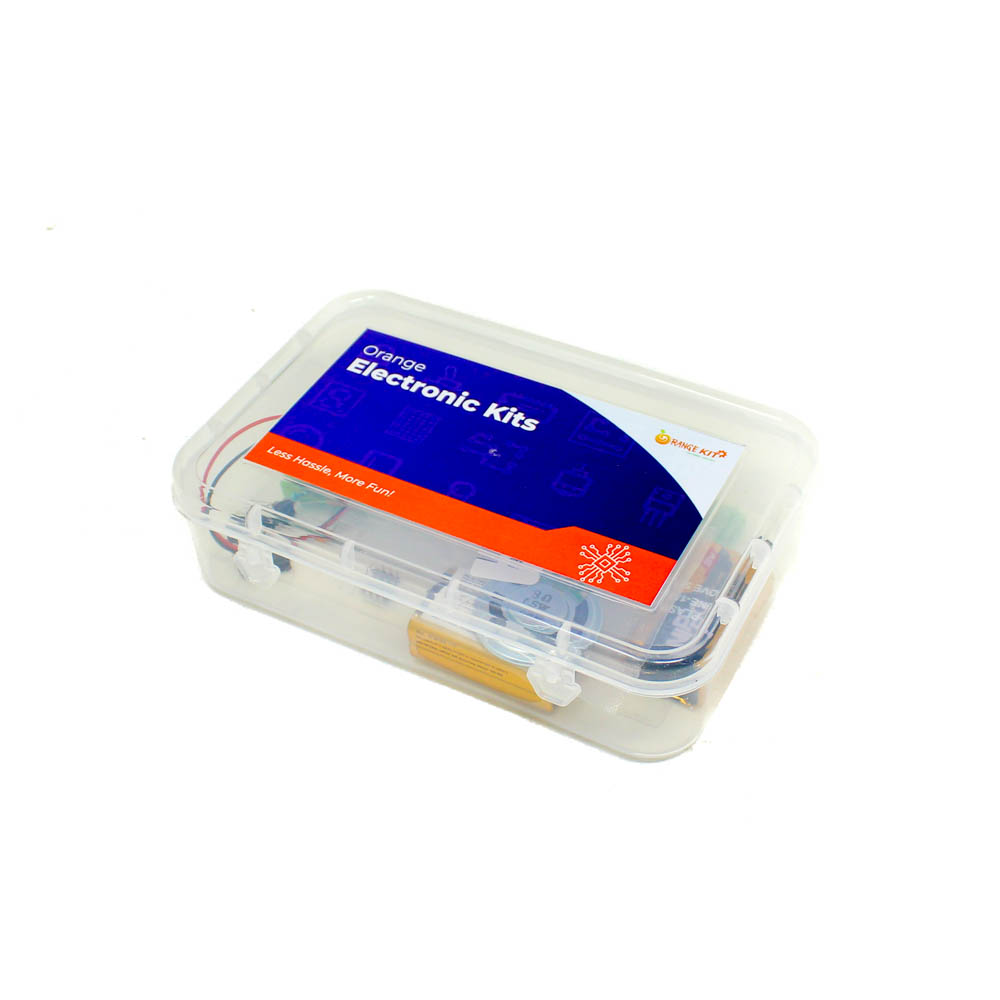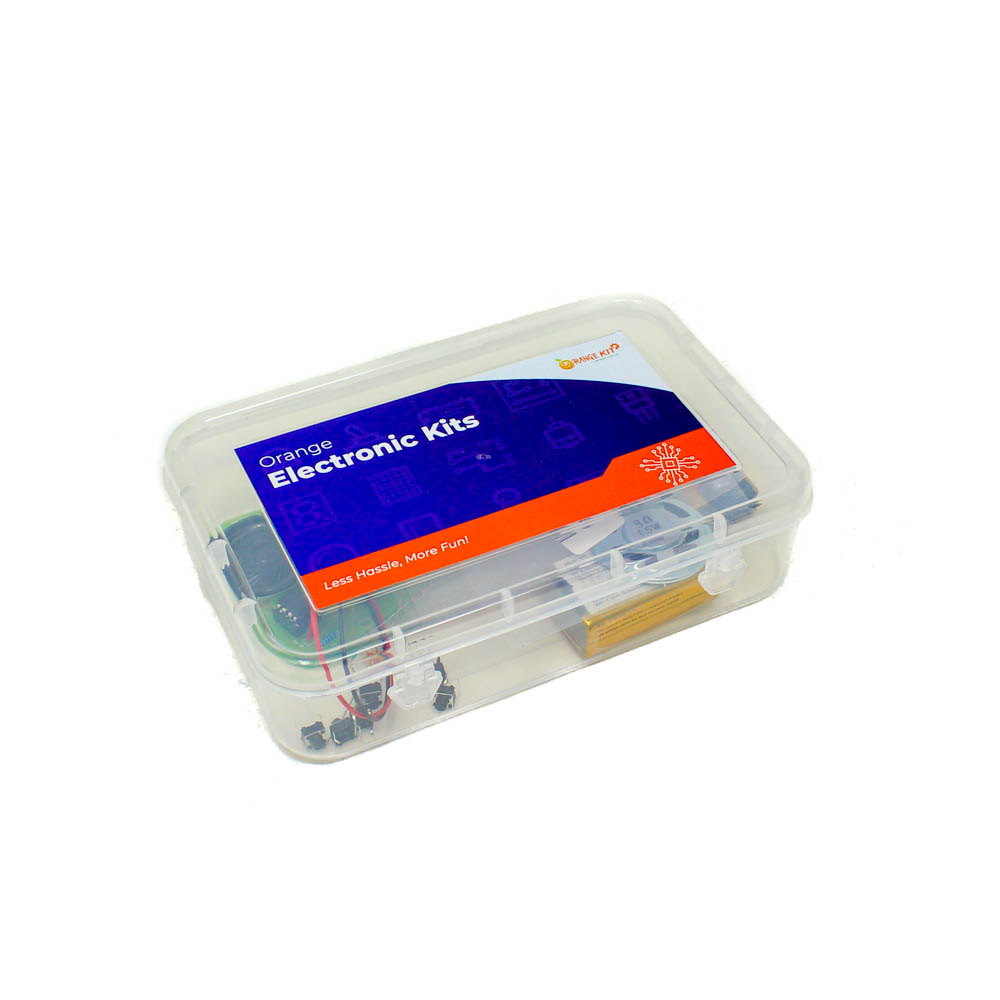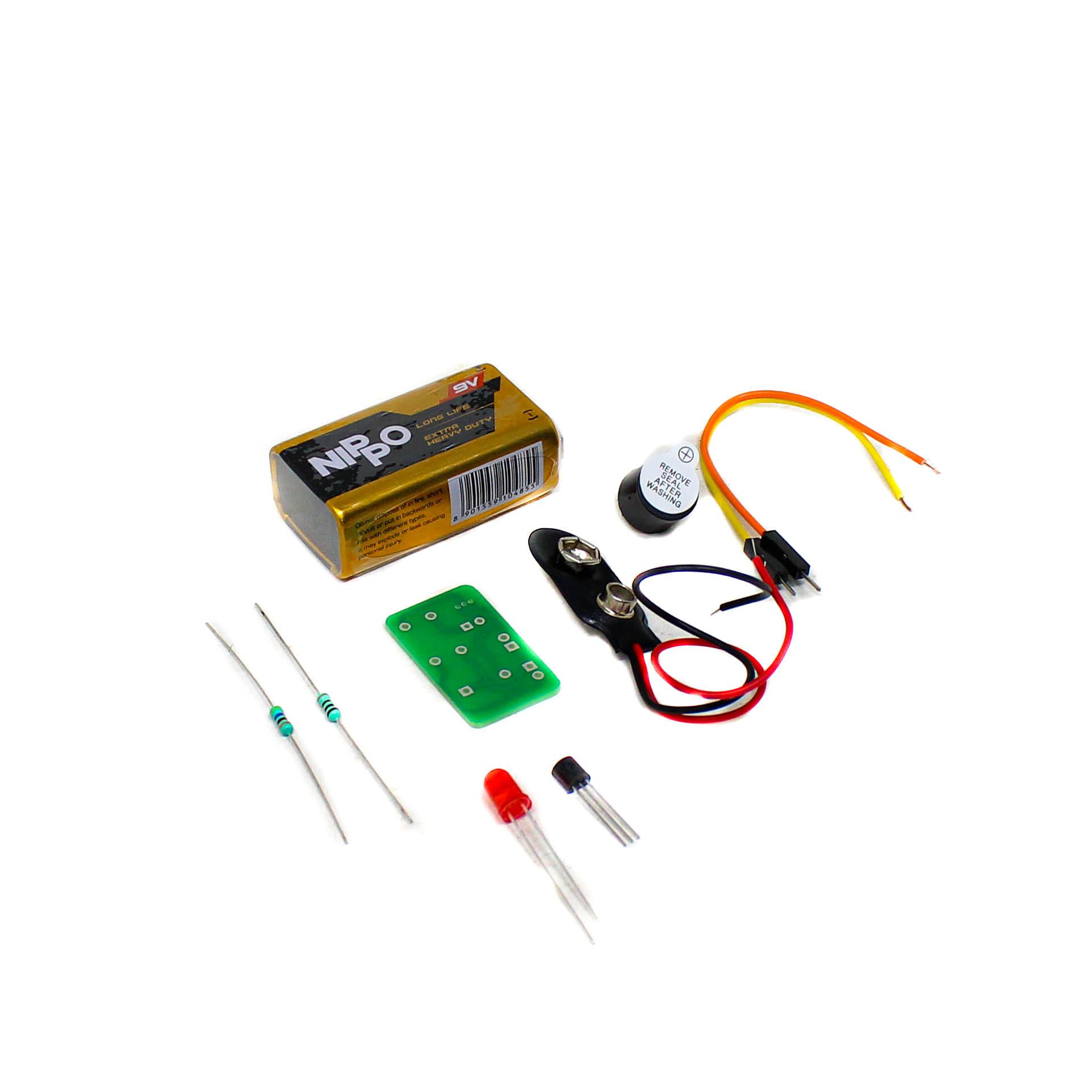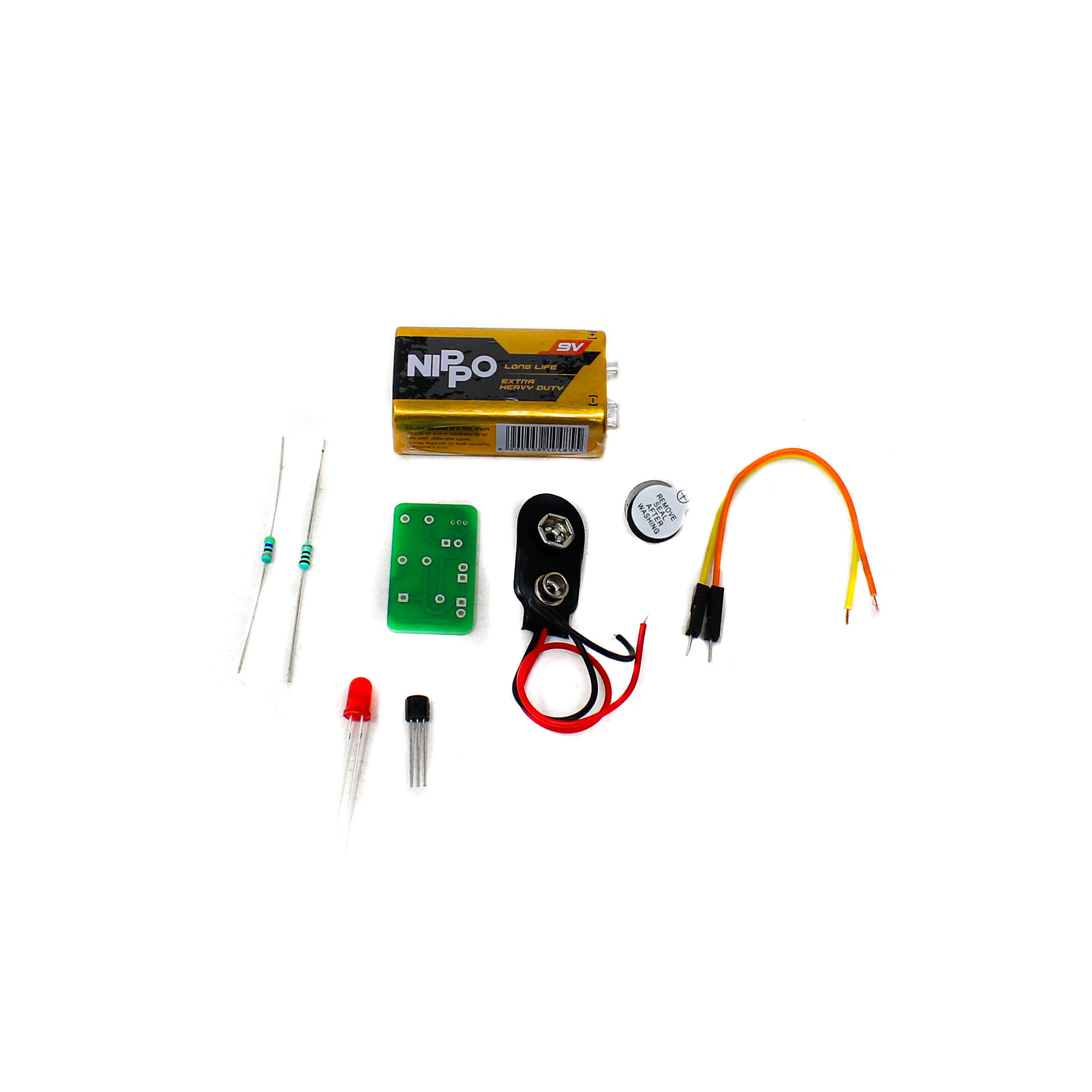Product details
Testing the continuity of a circuit is an essential step when comes to debugging hardware. Hardware debugging can be a real pain when we are not equipped with the proper tools and devices to handle it. This Continuity tester circuit will provide a cheap and efficient solution for debugging problems. The above circuit is capable of checking the connectivity that is electrical conduction path between two points.
This circuit uses a Red LED and a buzzer to indicate there is an electrical path established between two points. The entire circuit can be powered by a simple 5-volt battery. A simple NPN transistor 2N2222 forms the base of this above circuit. This transistor was used as a switch to both the LED and buzzer connected to it.
Probes are nothing but a conducting medium (wire) that helps to test the conductivity between two points. When probes are placed between two points in a circuit if the two points are not internally connected in the hardware there will be no electrical path which in turn keeps the transistor in an OFF state. So the buzzer and LED remains in an off state indicating there is no conductivity between the two points.
When probes are placed between two points where there is an internal connection that is an electrical path for current flow the transistor will be turned on. This will activate the LED and Buzzer which will act as an indication for continuity between the points to the user. Cost, size and easy usage are the main advantages of this circuit
Pinout:
- This circuit uses a Red LED and a buzzer to indicate there is an electrical path established between two points. The entire circuit can be powered by a simple 5-volt battery. A simple NPN transistor 2N2222 forms the base of this above circuit. This transistor was used as a switch to both the LED and buzzer connected to it.
- Probes are nothing but a conducting medium (wire) that helps to test the conductivity between two points. When probes are placed between two points in a circuit if the two points are not internally connected in the hardware there will be no electrical path which in turn keeps the transistor in an OFF state. So the buzzer and LED remains in an off state indicating there is no conductivity between the two points.
- When probes are placed between two points where there is an internal connection that is an electrical path for current flow the transistor will be turned on. This will activate the LED and Buzzer which will act as an indication for continuity between the points to the user. Cost, size and easy usage are the main advantages of this circuit
Application:
- To test the circuit continuity and detect faults in the circuit.
Package Include:
1 x Orange DIY Continuity Tester
















There are no reviews yet.